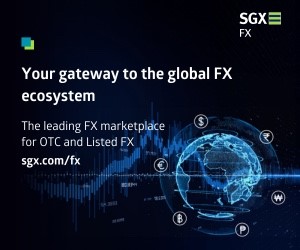TradFi FMIs Call for Greater Digital Asset Collaboration
Posted by Colin Lambert. Last updated: September 19, 2023
Three traditional finance financial market infrastructures (FMIs); Clearstream, DTCC and Euroclear, have published a paper on the state of the industry’s digital asset evolution calling for increased collaboration to progress the crypto ecosystem.
The three firms say the current market structure includes fragmented standards, varying regulatory treatment, limited integrations with institutional-grade payment rails and siloed liquidity – and argue that all are limiting factors to the further digitalisation of global financial markets.
While the last several years have seen a growing number of initiatives seeking to establish digital asset-based solutions, the paper suggests that industry-wide transformation will likely slow, unless these challenges are addressed. It highlights that two constraints in particular – scale and interoperability – must be addressed as priorities.
The paper argues that years of smaller deployments have resulted in “sub-scale, isolated pools of liquidity on proprietary DLTs, creating obstacles to growth”. It adds that in 2023, 74% of DLT projects across the capital markets involved fewer than six participants.
“Today’s digital asset initiatives are also highly disparate, with varying standards and propositions related to settlement and custody processes and inconsistent approaches to the supervision and governance of smart contracts and related DLT protocols,” the FMIs state. “These challenges, if unaddressed, will perpetuate a fragmented landscape, and run counter to the very efficiencies of DLT that the industry set out to capture initially.”
To advance adoption and scale, DTCC, Clearstream and Euroclear have pledged to collaborate with the industry, ultimately reducing the costs of connectivity and enabling consistent operating standards across processes, platforms, and digital assets themselves.
“We are at an inflection point as an industry when it comes to DLT and digital assets,” observes Jennifer Peve, global head of strategy and innovation at DTCC. “With digital assets forecasted to grow in value to around $16 trillion over the next 15 years, now is the time to assess what is needed to propel advancement.
“While we have all accelerated our learnings and identified the benefits of and constraints related to DLT on a smaller scale in recent years, there is broad recognition of the growing need for well-regulated, neutral players to provide trust, resilience and standardised connectivity in their respective ecosystems,” she continues. “The role FMIs like DTCC have played for decades – to drive digital asset adoption.”
Jens Hachmeister, head of issuer services and new digital markets at Clearstream, adds, “New technologies and digital assets will transform the financial industry. As a neutral financial market infrastructure, we are uniquely placed to help the industry’s transition efforts by modernising infrastructure and driving the adoption of standards across DLT protocols and smart contract language that will lead to better and faster interoperability between ecosystems.”
Finally, Philippe Laurensy, head of group strategy, product management and innovation at Euroclear Group, saysm “Financial market infrastructures have a long legacy of supporting technological innovation. Today, the pace of change is consistently accelerating and alongside our partners, we wholeheartedly embrace the promising potential of blockchain and digital assets. FMIs play a pivotal role in helping to unlock the true business value of digital assets through our robust, resilient ecosystem. By providing leading edge analysis with our peers, we can continue to pave the way for further advancements and bring ground-breaking solutions to the market.”



